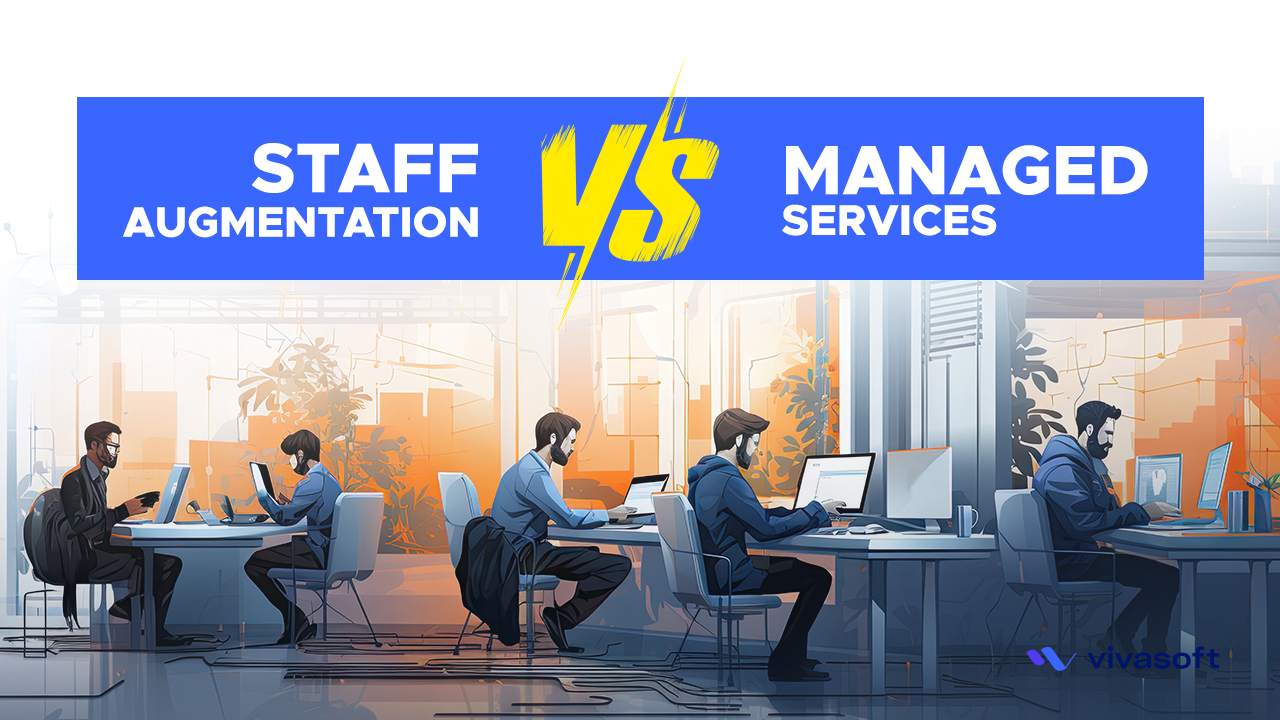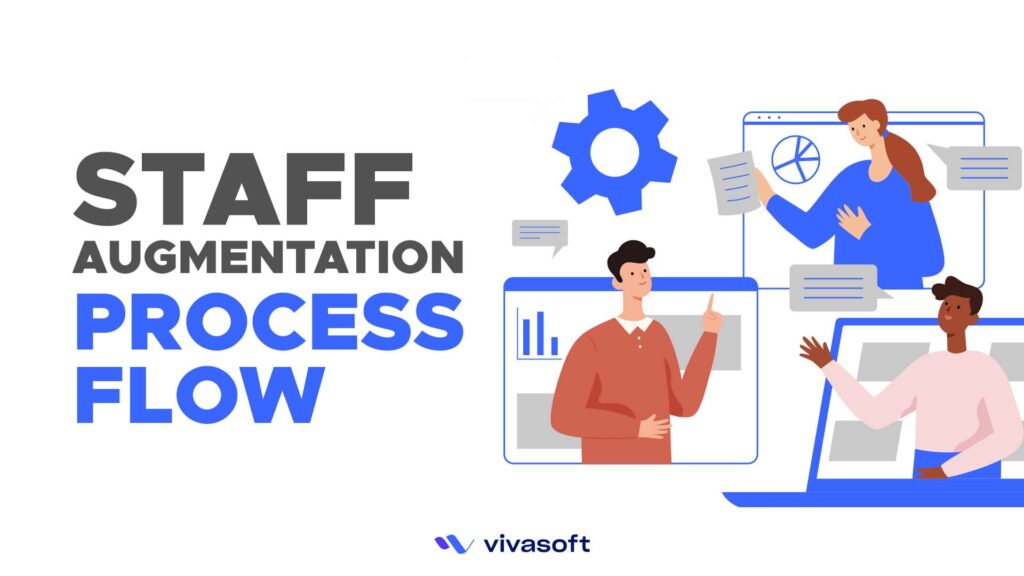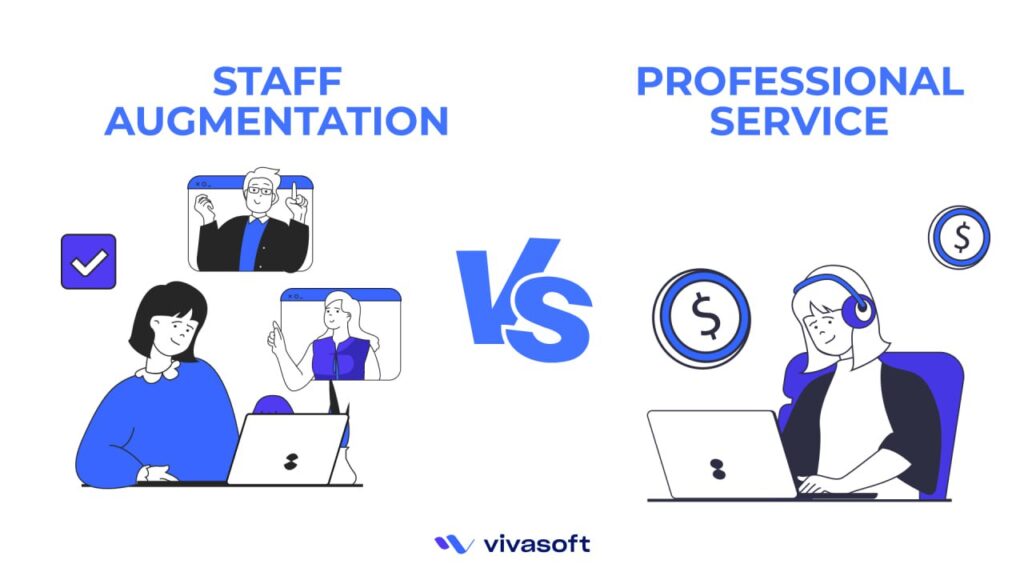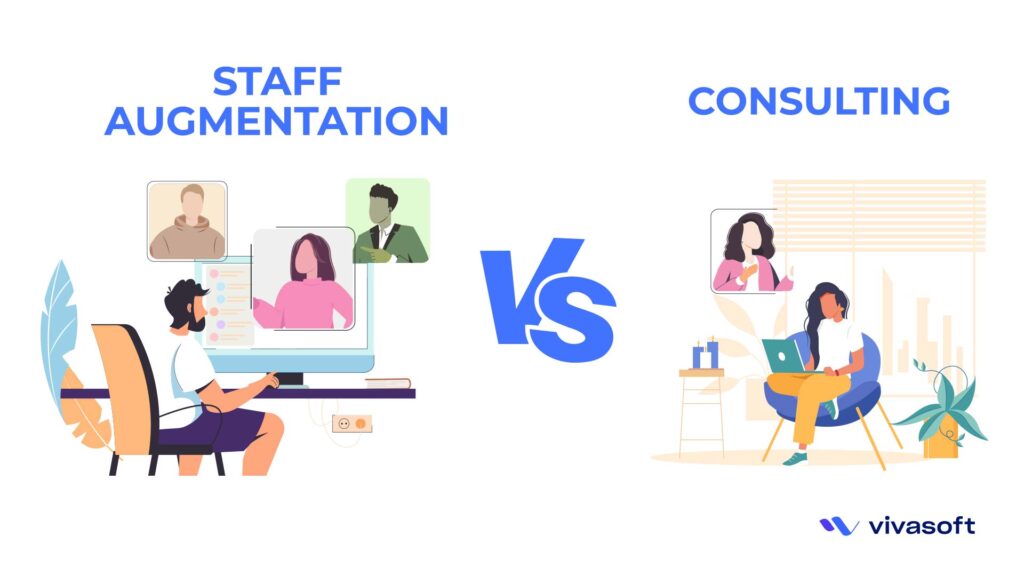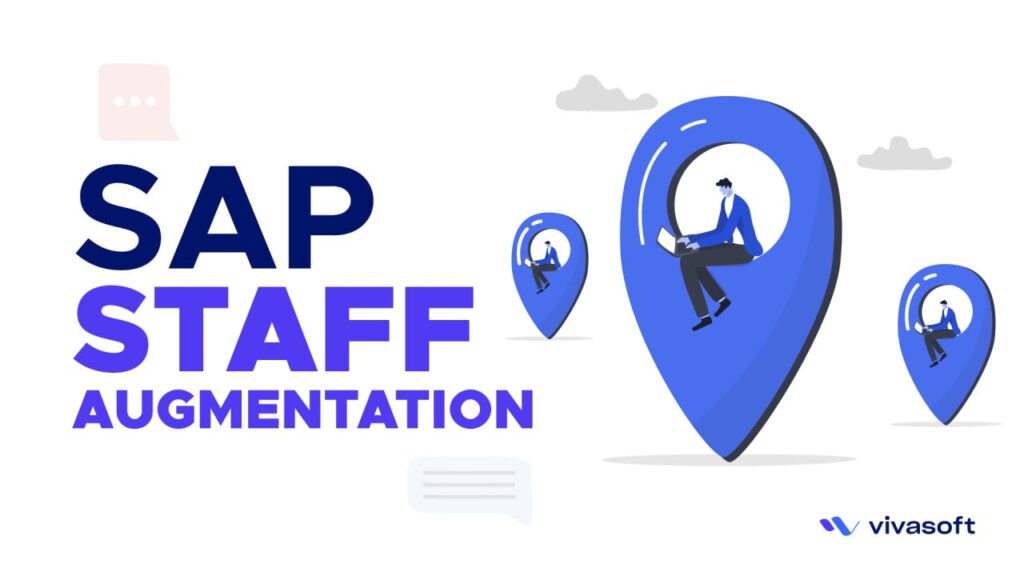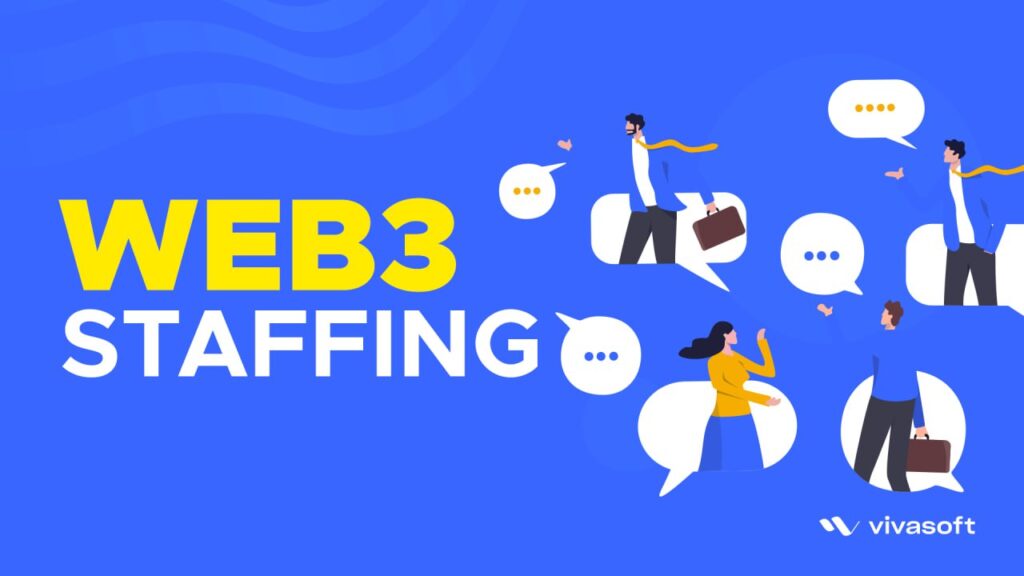In this digital age, when businesses want to outsource their workers in a more efficient and open way, it is very important to know the difference between these two choices – Staff Augmentation vs Managed Services. There are two kinds of workforce outsourcing models. One is Staff Augmentation and the other is Managed Services. It is like choosing between assembling your dream team or hiring a crew to navigate the ship for you.
Staff augmentation involves recruiting specific experts or personnel to help your in-house workforce. It’s like getting help from experts for a short-term job or filling in skill gaps. On the other hand, managed services have a specialized group managing one or more operational aspects. It allows you to focus on your core business functions.
This decision is like choosing your co-pilot for a journey. It may have far-reaching consequences for the future of your company. So, Let’s see the comparison between Staff Augmentation & Managed Services as it is a really important decision for your business. Determine which option suits your business best.
Staff Augmentation vs Managed Services
Both staff augmentation and managed services have their own set of standards. These two have some similarities. But they are totally different functionally. To understand the differences between these two outsourcing business models we have to compare their specifications. Like how they respond in terms of flexibility, costs, control, and other situations.
| Criteria | Staff Augmentation | Managed Services |
|---|---|---|
| Control | Staff augmentation gives direct control over in-house resources | Service provider has the control over the project. |
| Flexibility | More flexible to Immediate addressing of staff/ skill shortages. | Less flexible to immediate project needs or solutions. |
| Cost-effectiveness | Comparatively cost-effective. But there are variable/ hidden costs based on resource usage. | Costs are comparatively higher. But it has fixed costs with predictable monthly expenses. |
| Responsibility | Clients retain full responsibility for tasks. | Service providers take on task responsibilities. |
| Scalability | Easily scalable to quickly adjust to changing needs. | Service providers handle scalability. They adjust resources to meet changing requirements. |
| Project Management | Clients have direct control on project management and project execution. | Provider manages end-to-end project execution. Gives flexibility to focus on core business functions. |
| Risk Management | Clients take on the project's risks and management. This provides a high level of control over risk reducing strategies. | Service providers share project risks. It creates collaborative risk management. |
| Time Commitment | Short-term commitment for specific projects. | Long-term commitment for ongoing support |
| Training & Onboarding | Needs extra effort for training and onboarding. | Provider manages training, onboarding & integration process for new resources. |
| Expertise Access | Access to specific & specialized expertise as per project requirements. | Access to a wide range of expertise. |
| Regulatory Compliance | Client ensures compliance with regulations. | Service provider ensures compliance with regulations. |
| Project size/ duratio | Best suited for short-term projects or project specific needs. | Best suited for long-term projects. Projects where ongoing support is needed. |
| Security | Provides enhanced security. As, only the client has access to sensitive information. | With managed services, you have to share sensitive data with a third party. It is less secure. |
| Infrastructure | Staff augmentation minimizes the need for significant changes in business infrastructure. | Service provider manages the infrastructure for project needs. |
| Customization | Easily customizable as per project demands & needs. | Provides standardized solutions with limited customization. |
Understanding Staff Augmentation and Managed Services
What does the term 'Staff Augmentation' mean?

Staff augmentation is a flexible method of hiring external experts for temporary solutions. These professionals join your existing in-house team. They contribute specialized skills and knowledge to handle specific projects or roles. They follow your direct instructions and integrate into your company’s workflow.
This model is effective when you need expertise without recruiting full-time workers or long-term commitment. Staff Augmentation is ideal for filling short-term skill gaps or additional help for projects. This method lets your company quickly adjust to new project needs. It also makes sure that the right people are available when they are needed.
What exactly is Managed Service?

Managed service is like having a reliable, outsourced provider for your IT needs. They work as an external provider responsible for overseeing and maintaining various aspects of your IT infrastructure and operations. It is like providing proactive support, and monitoring your systems round the clock. This model allows businesses to focus on their core activities. As they are in charge of the hired work, you don’t have to worry about it. Managed services are ideal for long-term support and maintenance. Here are some of the services they provide:
- Cloud infrastructure maintenance
- Platform migration
- Backup recovery
- Security and many others
Comparing the Pros & Cons of Staff Augmentation and Managed Services
Choosing between staff augmentation and managed services is a critical decision for businesses. To know the differences between staff augmentation and managed services, we need to compare their benefits and drawbacks. Understanding these nuances is essential to make the right decision for the organization’s goals and project needs.
Pros of Staff Augmentation
Flexibility
Staff augmentation is more flexible. You can outsource specific personnel or expertise. As the needs of the projects change, you can quickly add or remove workers to meet those needs. This ability to change is useful in fields where work loads change often.
Specialized Skills
Augmented staff members come with project-specific skills. This lets you access knowledge that may be expensive or hard to keep in-house.
Cost-Efficiency
It’s often a cost-effective solution. You can avoid the expense of hiring full-time employees with benefits and training. You pay for the expertise you need, when you need it.
Control
In this model there is direct control and oversight over the augmented staff. They work under your supervision. It ensures alignment with your project goals and objectives.
Rapid Onboarding
Onboarding augmented staff is typically faster and smoother. They can quickly integrate into your existing team. This minimizes disruption to ongoing projects.
Focus on Core Tasks
Your in-house team can concentrate on core tasks while augmented staff handle specialized projects. It enhances overall productivity and efficiency.
No Long-Term Commitment
You’re not tied to long-term employment contracts. So, staff augmentation is flexible to project cycles and business demands.
Innovation
Augmented staff can bring fresh ideas and approaches to projects. There is a good possibility of introducing fresh ideas and fostering creativity.
Reduced Training Costs
Minimal training is required for augmented staff. Because they come with the necessary expertise. It reduces time and cost investments.
Enhanced Productivity
Staff augmentation can help expedite project completion, meeting deadlines and improving overall productivity.
Cons of Staff Augmentation
Temporary Nature
Augmented staff may not provide long-term continuity for ongoing projects. Constant turnover can disrupt team cohesion. So, it is better to hire an in-house team if you need long-term support.
Integration Challenges
Integrating temporary staff into your team can pose some challenges. Adapting to your internal processes, workflows and communication with the team members can be problematic sometimes. Especially when the staff augmentation is outsourced from different time zones.
Training Requirements
The outsourced staff you hire will need to be trained on how your company works.
Pros of Managed Services
Expertise
Managed services provide access to a whole team of IT experts with diverse skills. So, you don’t need to gather an in-house team. They have all the necessary tools and tech support and can get started right away. They ensure that your systems are in capable hands, and you benefit from their experience.
Cost Predictability
In managed services the costs are usually fixed and predictable. It is good for budget planning and cost control.
24/7 Support
Managed services offer round-the-clock system monitoring and support. This reduces downtime and ensures that issues are addressed promptly.
Focus on Core Business
With IT management outsourced, in-house teams can concentrate on core business activities.
Scalability
Managed services can easily scale with your growing business needs. It is an ideal solution for businesses looking to expand.
Advanced Technology Utilization
IT tools and technologies are comparatively expensive. Also, it needs training and expertise to use them properly. Managed service providers offer access to cutting-edge technology and tools. And they already have trained experts. It lets your company use cutting-edge solutions without a big investment.
Skillful Expertise
Managed services come with an expert team ready to handle your IT needs. This eliminates the need for training.
Efficient Project Management
Managed service providers provide dedicated project management. They usually take the full responsibility for project management. They ensure your IT projects are organized, on time, and aligned with business goals.
Security
Managed service providers often have robust security measures in place. It enhances data protection and safeguarding your business against cyber threats.
Cons of Managed Services
Higher Costs
Managed services can be costlier compared to staff augmentation. You have to pay for a comprehensive suite of IT services.
Less Control
In staff augmentation you have direct control on the whole process. But for a managed process while you maintain control over your strategic goals, you may have less direct control over your IT environment and operations compared to an in-house team. It can lead to limitations in implementing specific strategies or solutions.
Limited Customization
Managed services may not always offer highly customized solutions. Managed service providers typically offer standardized packages. Those might not always perfectly align with your unique business needs.
Communication Challenges
Managed services may lead to communication challenges between business and the service provider. Because of differences in communication styles, time zones, or the level of responsiveness can occasionally result in miscommunication or delays in addressing issues. This is a crucial drawback if you need to have frequent communication for your project development.
Potential for Service Dependency
Overusing managed service providers can lead to dependency. The provider’s problems or closure could damage your business.
Data Security Concerns
There is a huge security concern in outsourcing managed services. You have to give access to sensitive data and information about your business. If the managed service provider is not properly reliable then it can become a major security issue.
Key Factors to Consider

You must consider several factors while choosing between staff augmentation and managed services. These factors will determine which model suits your business goals and project needs.
Flexibility
You can quickly adapt to changing project needs via staff augmentation. You have the power to scale your workforce up or down as per your project demands. Whether you need temporary experts or to shrink after a project, staff augmentation fits effortlessly. It is suitable for businesses with changing workloads and project cycles.
Managed services provide a different form of flexibility. As the MSP handles IT operations and support., you gain the flexibility to focus on core business activities. This frees up your team to concentrate on strategic initiatives.
Costs
Staff augmentation is a cost-efficient solution. You pay for the expertise you need when you need it. You can avoid the long-term expenses associated with hiring full-time employees. However, you should be prepared for costs associated with recruitment and onboarding.
Managed services require an initial investment. It can be relatively higher, particularly for small businesses. They offer cost predictability, as the fees are usually fixed. Managed services may be cheaper over time due to the lack of in-house personnel and efficiency advantages. But it is generally costlier than staff augmentation.
Level of Control
Compared to managed services, staff augmentation has a better level of control. With staff augmentation, you retain full control and supervision over augmented staff. They become an extended part of your existing team. This allows you to align them with your project goals and objectives.
Managed services have less direct control over your IT operations. The day-to-day management and execution are handed over to the service provider. You can focus over your strategic goals more. But this can be both an advantage and a drawback, depending on your preferences. Sometimes their decision might not go along with your business goals.
Security
Data breach or any security measures are big concerts for both models. There is a lesser risk of in staff augmentation as you can cover it with NDA. Security largely depends on your organization’s existing security measures. Augmented staff must comply with your security protocols. The level of security can vary based on your internal systems and practices.
For Managed services you are required to share your sensitive information and data with the MSP. So, you need to have a clear contract for strong security measures while outsourcing managed services. Another thing is that MSPs typically have robust security measures in place. They’re experienced in handling data protection, cybersecurity, and compliance. They can offer a higher level of security compared to in-house operations.
Project Duration
Staff augmentation is ideal for short-term or project-specific needs. It allows you to quickly onboard experts and scale down once the project is complete. It’s well-suited for businesses with varying project durations.
Managed services are typically designed for longer-term commitments. They’re best for businesses seeking ongoing, comprehensive IT management. Their consistency can be very helpful for long-term projects or ongoing IT support.
Cost Comparison of Staff Augmentation vs Managed Services

Let’s see the cost breakdown more deeply for these two models. As it is a crucial aspect to consider, it’s essential to perform an in-depth analysis of the cost differences.
Cost Breakdown for Staff Augmentation
Hourly or Project-Based Wages: Staff augmentation charges by the hour or project. You can easily figure out this cost. Also, you have control over the expense based on the duration of the engagement.
Recruitment and Onboarding: Hiring and training them costs a lot of money. Although these costs are not directly connected to the augmented staff’s wages. This includes expenses for advertising, interviewing, and training.
Indirect Costs: There are some indirect costs that may occur. Providing additional workspace, equipment, and benefits to accommodate augmented staff are some of them.
Cost Breakdown Managed Services
Monthly or Annual Contracts: The costs for managed services often come with fixed monthly or annual fees. These costs include assistance with all aspects of your IT services and support.
Initial Setup Costs: There can be initial setup costs when onboarding managed services. These include infrastructure setup, hardware, and software investments, as well as the transition phase.
Ongoing Maintenance and Support: Managed service providers deliver ongoing maintenance, support, and cybersecurity measures. They are included in the standard pricing.
Case Study of Costs of the Two Models
A clear case study of the cost breakdown will give better understanding. So, here are two case studies for the two different models:
Staff Augmentation Case Study
A small software development company requires a cybersecurity expert to perform a security audit on their systems. They opt for staff augmentation and hire a cybersecurity specialist for a 3-month project. The breakdown of costs is as follows:
- Hourly Rate: $80
- Total Hours Worked: 480 hours (160 hours per month for 3 months)
- Total Cost: $38,400
Managed Services Case Study
A mid-sized manufacturing company with 150 employees decides to outsource its IT solution to managed service providers. To solve all of their IT problems, they partner with a managed service provider. The annual cost is $120,000, including setup fees. Their costs have stayed the same over the years and safety of their IT infrastructure.
Choosing the Right Model for Your Organization

It is crucial to consider the specific scenarios and cases where one model might be more suitable than the other. Here are the cases and situations that you can use to assess your business or project.
When to Choose Staff Augmentation
Short-Term Projects: Staff augmentation provides specialized skills or additional assistance for a project. Staff augmentation is an excellent choice when your organization has short-term, project-specific needs. You don’t need to commit to long-term hiring. Staff augmentation provides the flexibility to bring in experts for the duration of the project.
Scaling Flexibility: Staff augmentation lets you easily add or remove workers. If your project goes up and down a lot, staff augmentation helps you adjust your team size fast. It’s great for businesses with different project lengths or changing workloads.
Maintaining Direct Control: Staff augmentation Gives direct control over the project. This includes the selection and supervision of team members, project development process, etc. Staff augmentation aligns well with your project control preferences. Also, augmented workers effortlessly integrate with your team to meet project goals.
When to Choose Managed Services
Long-Term IT Management: Managed services provide the perfect solution when your organization seeks long-term, comprehensive IT management. If you prefer to outsource the day-to-day IT operations and support, MSP is best. It allows your in-house team to focus on core business activities and strategic initiative.
Predictable Costs: Managed services are preferable when you need cost or budget predictability. They typically come with fixed monthly or annual fees. It allows you to plan your IT budget with certainty. This predictability minimizes unexpected expenses and simplifies financial planning.
Enhanced Security and Compliance: Managed services are a good fit for companies that value data protection, cybersecurity, and compliance. MSPs have a range of security measures and compliance protocols in place. This makes sure that your IT environment complies with industry requirements.
Complex IT Infrastructure: Managed services are effective for complex IT infrastructures that need 24/7 monitoring, proactive maintenance, and support. MSPs have the skills and resources to handle complex technology systems.
Conclusion
So, what we have understood from the discussion above is that staff augmentation provides flexibility for short-term projects and direct control. It is ideal for organizations with fluctuating workloads. On the other hand, managed services provide long-term IT management, cost predictability, heightened security, and comprehensive support. It is best fit for long-term partnerships and continuous monitoring.
Which of the two models should be recommended for you depends on your specific needs. Consider your project duration, scalability requirements, budget predictability, security concerns, and the complexity of your IT infrastructure. It’s easy. If you need to fill a skill gap for a project development staff augmentation is the right choice. And if you need long-term support and expecting a team to start work right away for you then there are Managed service providers available for you.




